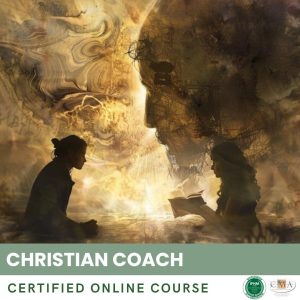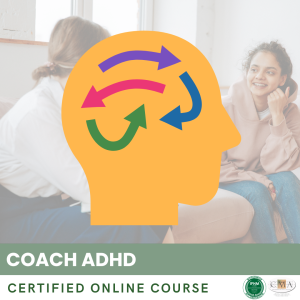After exploring the defense mechanisms and resistances that can hinder the healing process, it is essential to focus on the emotional wounds and traumas that are often at the origin of these coping strategies. These painful experiences, whether they are one-off or repeated, can leave deep marks on the psyche and durably influence the way we perceive the world and interact with others.
Emotional wounds can take many forms, such as rejection, abandonment, humiliation, betrayal or neglect. They often occur in the context of early relationships, when the child is particularly vulnerable and dependent on those around him/her for emotional and relational needs. For example, a child whose parents are emotionally unavailable or rejecting can develop a wound of abandonment, which will later manifest in life as an intense fear of solitude or difficulty trusting others.
Traumas, on the other hand, are events of extreme intensity, threatening the individual’s physical or psychological integrity and exceeding their adaptative abilities. Physical, sexual or verbal violence, accidents, natural disasters or wartime experiences are examples of potentially traumatic situations. Faced with these events, the psyche can become overwhelmed and put survival mechanisms in place, such as dissociation or emotional freezing, which allow one to cut off from pain but hinder the process of integrating the experience.
The consequences of emotional wounds and traumas can be varied and lasting. On a psychological level, symptoms such as anxiety, depression, sleep disorders, flashbacks, hypervigilance or avoidance behaviors can be observed. Traumatized individuals can also develop limiting beliefs about themselves, others and the world, such as “I do not deserve to be loved”, “others will always hurt me” or “the world is dangerous”. These beliefs, often unconscious, influence life choices and relationships, thereby perpetuating painful patterns.
On a physiological level, traumas can cause lasting disruptions to the nervous system, which remains stuck in states of hyperactivation (fight/flight) or hypoactivation (freeze/faint). These chronic stress states have repercussions on overall health, weakening the immune system and favoring the development of psychosomatic diseases. Research in epigenetics has also shown that traumas can modify the expression of genes, thereby transmitting a vulnerability to stress to future generations.
In the face of these complex issues, the healing process for emotional wounds and traumas requires an integrative and multidimensional approach. It is about offering a safe and benevolent space, where the person can gradually reconnect to their inner experience and put words to the unspeakable. Emotional regulation techniques, such as heart coherence or meditation, can help to soothe the nervous system and develop a greater tolerance for difficult emotions.
Working on limiting beliefs, through techniques like Byron Katie’s Work or NLP, allows questioning dysfunctional thought patterns and adopting a more nuanced and realistic view of oneself and the world. Body-based approaches, like therapeutic yoga or Somatic Experiencing, promote the release of physical and emotional tensions trapped in the body, thus restoring a sense of inner safety.
Energy healing techniques, like Reiki or Healing Touch, can also be greatly helpful in soothing cellular memories and rebalancing energy fields disrupted by traumas. By working at the subtle level, these approaches allow one to bypass the mind’s resistances and access a level of deep healing, which surpasses intellectual awareness.
Lastly, relational support is a key element of the healing process. As a Spiritual Healing Coach, our role is to offer a loving and empathetic presence, allowing the person to feel seen, heard and accepted in all parts of themselves. This restorative relationship offers a corrective experience, which can gradually transform past wounds into resources for the present.
It is important to bear in mind that the healing of emotional wounds and traumas is a gradual and non-linear process, unfolding at a unique pace for each individual. Some wounds can be soothed in a few sessions, while others will require longer-term work, with periods of integration and relapse. Our role is to offer compassionate and tailored accompaniment, respecting the defenses and resistances that present themselves, while encouraging the person to take new steps towards their healing.
By welcoming with compassion the wounded parts of our clients and guiding them towards reconnecting with their deep essence, we enable them to gradually transform their relationship with themselves and the world. This inner healing paves the way to a freer, more loving life, more aligned with soul aspirations. As a Spiritual Healing Coach, we have the privilege of being witnesses and catalysts to these transformation processes, revealing the inherent resilience and beauty of every human being.
Key takeaways:
– Emotional wounds and traumas are often at the origin of the defense mechanisms and resistances that hinder the healing process.
– Emotional wounds can take various forms (rejection, abandonment, humiliation, betrayal, neglect) and frequently occur in the context of early relationships.
– Traumas are events of extreme intensity that exceed the individual’s adaptive capacities and can trigger survival mechanisms such as dissociation or emotional freezing.
– The consequences of emotional wounds and traumas can be lasting and manifest on the psychological (anxiety, depression, limiting beliefs), physiological (disruptions of the nervous system, psychosomatic illnesses) and epigenetic levels.
– The healing of emotional wounds and traumas requires an integrative and multidimensional approach, including emotional regulation techniques, work on limiting beliefs, body-based and energetic approaches, as well as relational support.
– The healing process is gradual, non-linear and unique to each individual. The role of the Spiritual Healing Coach is to provide kind, empathic and personalized support, fostering a restorative relationship and a reconnection to the person’s deep essence.
👉 To download docx (Editable) file click here : Click here
👉 To download PDF file click here : Click here
👉 To download MP3 file click here : Click here







